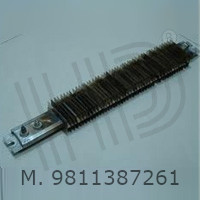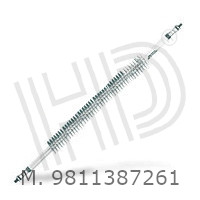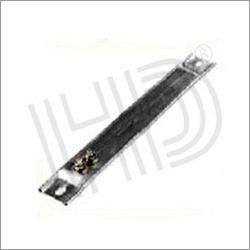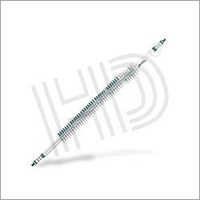With the addition of continuous spiral fins brazed to the sheath or rectangular fins crimped to the sheath, finned tubular air heating elements are similar to basic tubular elements. Lower surface element temperatures are achieved thanks to fins’ significant surface area increase and faster heat transfer to air.
They can have rectangular fins of different thicknesses. Continuous round fins of varying diameters and densities are used to construct continuous finned heaters.
Strip heaters with fins, usually referred to as finned strip heaters, are a typical form of heating element used in industrial and commercial heating applications. They are made up of a parallel-finned resistance heating element enclosed in a metal sheath.
The following are some essential qualities and traits of strip finned heaters:
Strip finned heaters are normally constructed from a resistance heating wire, such as nichrome or kanthal, that is enclosed in a metal sheath, commonly made of stainless steel. The heating element is mechanically and electrically protected by the sheath. The sheath is connected to the fins, which are typically perpendicular to the heating source and constructed of aluminium or stainless steel.
Strip finned heaters have a much larger surface area thanks to their fins, which facilitate efficient heat transfer. Better heat dissipation and effective heat transfer to the surrounding medium are encouraged by the increased surface area. The larger surface area enables more efficient heat distribution and faster heating.
Strip finned heaters are available in a variety of sizes and forms to accommodate a range of applications. They
Strip finned heaters come in a variety of designs that can be altered to fit a particular application’s needs. Options for customization include various lengths, widths, wattages, fin densities, and terminal arrangements. This makes it possible to create a heating solution specifically for the application.
Temperature Control: To maintain accurate temperature levels, strip finned heaters can be used in conjunction with temperature control tools like thermocouples or built-in temperature sensors.
Strip finned heaters have a wide range of uses in the manufacturing of polymers, packaging, food processing, laboratory equipment, and many other fields. They are frequently employed in applications for process heating, drying, curing, and gas and air heating.
Strip finned heaters must be installed, used, and maintained correctly to provide heating that is both secure and effective. To avoid any risks, it’s crucial to abide by the manufacturer’s instructions and safety recommendations.
Overall, strip finned heaters provide efficient and scalable heating solutions for commercial and industrial applications that demand precise temperature control and effective heat transmission.
Product Specification
| Voltage | 24 V~440 V |
| Heater Material | M.S./ S.S |
| Application | Industrial |
| Standard Strip Thickness | 11 mm |





